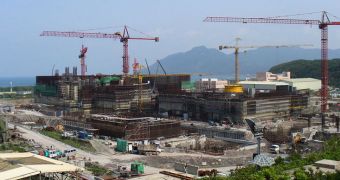The disaster currently unfolding at the Fukushima Daiichi nuclear power plant in Japan could have been prevented, had the reactors been constructed more recently, and with more advanced technology.
Scientists say that the six boiling-water reactors (BWR) at the facility are of an old design, that is not too stable, and that can easily be destroyed by the elements. This is precisely what happened on March 11, when a powerful earthquake struck the country.
The tremor itself did not produce damage, as the nuclear facility was constructed specifically to withstand tremendous ground movements. But the ensuing tsunami broke through the seawalls surrounding the power plants, and caused a lot of damage.
Three reactors are currently damaged, and going through a partial meltdown phase. In all fairness, there were massive numbers of contingency measures installed at the Fukushima Daiichi facility, but most of them were incapacitated by the tsunami.
Now, analysts are saying that nuclear power plants constructed in disaster-prone areas should contain new reactor designs, of third or fourth generation. These structures use passive cooling systems, instead of the active ones the Fukushima BWR are using.
In addition, they also employ a lot of new methods for reactor heat management, that far surpass those in use today. All six reactors at the Japanese facility (of which 3 were shut down when the tremor hit), were built between 1971 and 1979.
This is obvious in both design and structural flaws, analysts say. Despite tremendous efforts by emergency responders and plant staff, pressure and temperature levels continue to grow inside the reactor chamber, fueling fears that a total meltdown may ensure.
The situation highlights the vulnerability of old power plants to unforeseeable factors. Even if the Fukushima facility shut itself down automatically following the earthquake, its reactors still need active cooling to keep the fuel rods at normal temperature.
But the tsunami destroyed both the facility's power plant and the diesel-powered backup generators, leaving workers using hoses to water down the reactor core. At the same time, a heat exchange system in charge of bringing down water temperature in the reactor has also malfunctioned.
Therefore, even if seawater is pumped in at the necessary levels, there is no way to avoid temperature buildups inside the containment structure. At this point, it's still unclear whether a complete meltdown at either or all of the three affected reactors will be successfully avoided, Technology Review reports.

 14 DAY TRIAL //
14 DAY TRIAL //